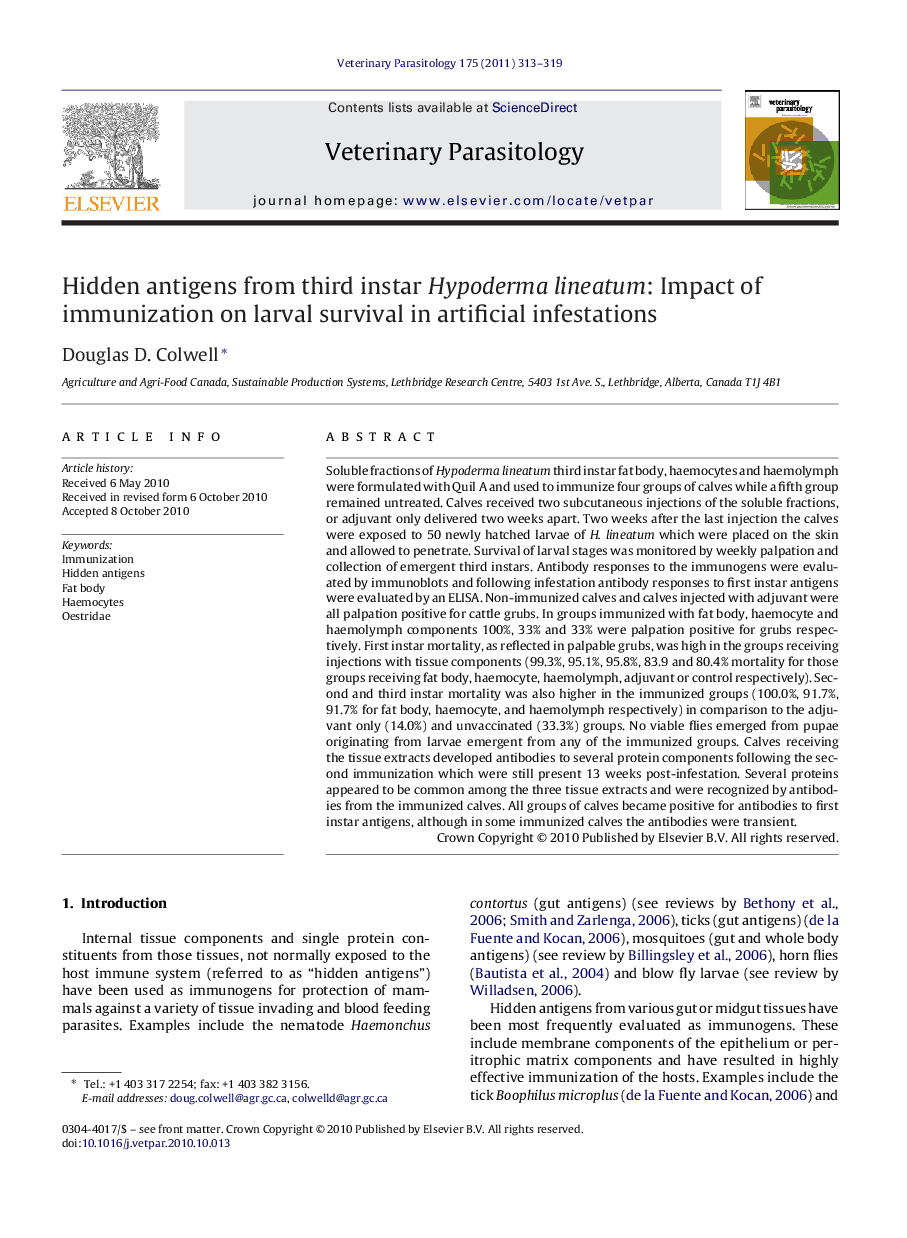| کد مقاله | کد نشریه | سال انتشار | مقاله انگلیسی | نسخه تمام متن |
|---|---|---|---|---|
| 5806091 | 1555730 | 2011 | 7 صفحه PDF | دانلود رایگان |

Soluble fractions of Hypoderma lineatum third instar fat body, haemocytes and haemolymph were formulated with Quil A and used to immunize four groups of calves while a fifth group remained untreated. Calves received two subcutaneous injections of the soluble fractions, or adjuvant only delivered two weeks apart. Two weeks after the last injection the calves were exposed to 50 newly hatched larvae of H. lineatum which were placed on the skin and allowed to penetrate. Survival of larval stages was monitored by weekly palpation and collection of emergent third instars. Antibody responses to the immunogens were evaluated by immunoblots and following infestation antibody responses to first instar antigens were evaluated by an ELISA. Non-immunized calves and calves injected with adjuvant were all palpation positive for cattle grubs. In groups immunized with fat body, haemocyte and haemolymph components 100%, 33% and 33% were palpation positive for grubs respectively. First instar mortality, as reflected in palpable grubs, was high in the groups receiving injections with tissue components (99.3%, 95.1%, 95.8%, 83.9 and 80.4% mortality for those groups receiving fat body, haemocyte, haemolymph, adjuvant or control respectively). Second and third instar mortality was also higher in the immunized groups (100.0%, 91.7%, 91.7% for fat body, haemocyte, and haemolymph respectively) in comparison to the adjuvant only (14.0%) and unvaccinated (33.3%) groups. No viable flies emerged from pupae originating from larvae emergent from any of the immunized groups. Calves receiving the tissue extracts developed antibodies to several protein components following the second immunization which were still present 13 weeks post-infestation. Several proteins appeared to be common among the three tissue extracts and were recognized by antibodies from the immunized calves. All groups of calves became positive for antibodies to first instar antigens, although in some immunized calves the antibodies were transient.
Journal: Veterinary Parasitology - Volume 175, Issues 3â4, 10 February 2011, Pages 313-319